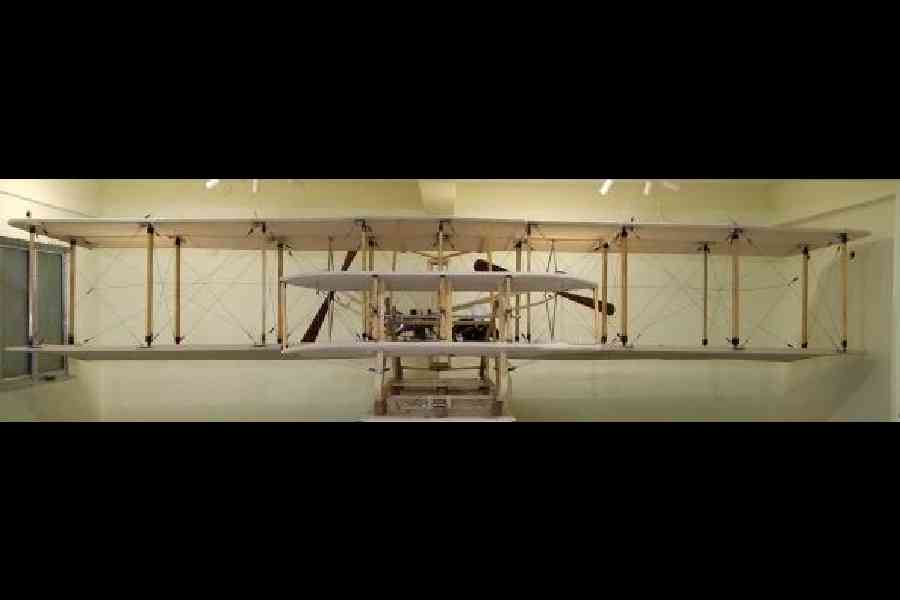New museum on the block: All about Space Hall of the Museum of Astronomy and Space Science


As we entered the Space Hall of the Museum of Astronomy and Space Science on the campus of the Indian Centre for Space Physics at Mukundapur in south Calcutta, our eyes popped out. Scattered throughout were autographs of space heroes we had only heard of: Neil Armstrong, Buzz Aldrin, Mike Collins, Yuri Gagarin, Valentina Tereshkova. With the autographs were photos of who’s who. However, the most eye catching was a perfect 1:2 sized replica of the Wright Brothers’ aeroplane, along with a cheque signed and endorsed by Orville Wright. A half-size replica of Sputnik, a 1:10 scale size of European satellite INTEGRAL, a 1:7 model of Isro’s Aditya L1 and a model of Chandrayaan-3 adorned this incredible room.
We saw signatures of pioneering rocket scientist Stephen H. Smith who, from 1934 to 1944, sent about 300 rockets to carry mail and food to inaccessible areas in India. We also came to know that Ram Chandra Chatterjee was the first Indian to transport himself using gas-filled balloons in 1889.
The main attraction of the Apollo-11 Room was an almost life-size Command Module with three crew members sitting at their command positions with 3D printed faces. The walls around depicted how the crew members were recovered after the module landed in the sea.

The mini-theatre Aruna was showing 3D movies of the Martian surface. In the Visitors from Space Hall, we saw rocks from the moon, Mars and numerous meteorites. We also saw a 370 crore-year- old fossil of Cyanobacteria, which for about 1 billion years raised the level of oxygen in our atmosphere so that living creatures, when they came, could breathe.
Though it was just a preview, we had time to sneak into the Hall of Fame to see the personal diaries of Meghnad Saha, writings of Satyendra Nath Bose as well as writings of Jagadish Chandra Bose and Marconi. Autographs of all the Nobel winners in astronomy and astrophysics were there too.
In the Literature room, the first thing that attracted us was an original newspaper from 1757, describing the “Black Hole of Calcutta” event and naming all the British soldiers who supposedly died in it. Astrophysical black holes, which are dead bodies of stars, got their names from this incident. There are books by all those who walked on the moon, some even signed by them. Books signed by Roger Penrose, Robert Millikan, S. Chandrasekhar and J.V. Narlikar dotted the space. There was a New York Times newspaper from 1919 wherein a report of Eddington’s proof of Einstein’s theory of general relativity was printed alongside an interview of Einstein. There is a model of a
30-metre telescope with about 500 hexagonal glasses and a model of Foucault’s pendulum.
We could see only four out of the 10 rooms and are eagerly waiting for the museum to open to the public.
Reshmi Singh, Sharmistha Das,
Pritam Dutta
Department of physics, Maharaja Manindra Chandra College, Calcutta